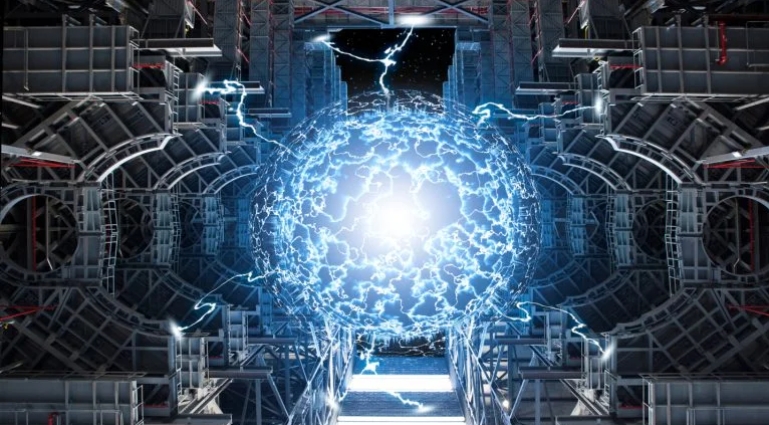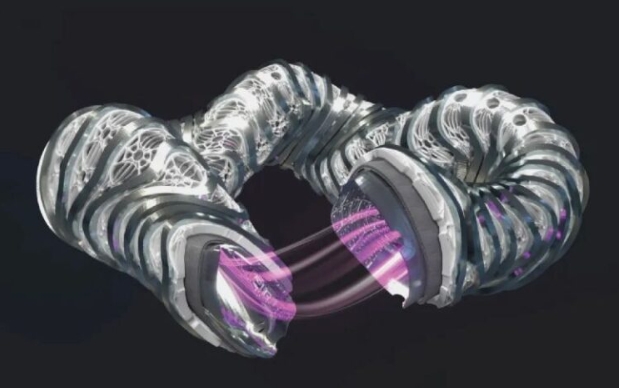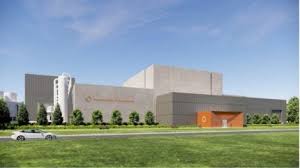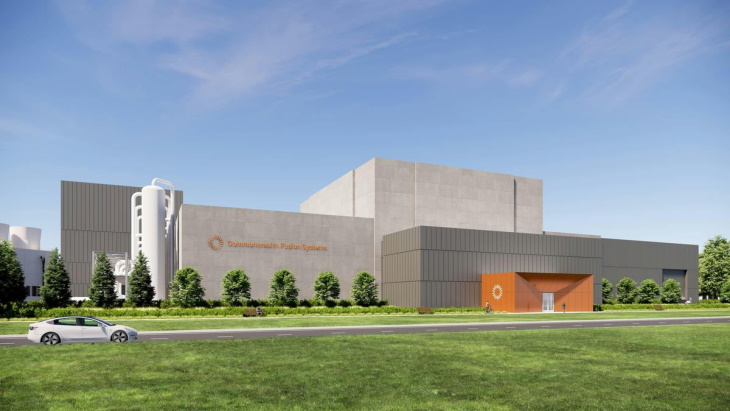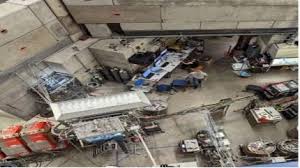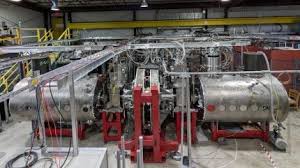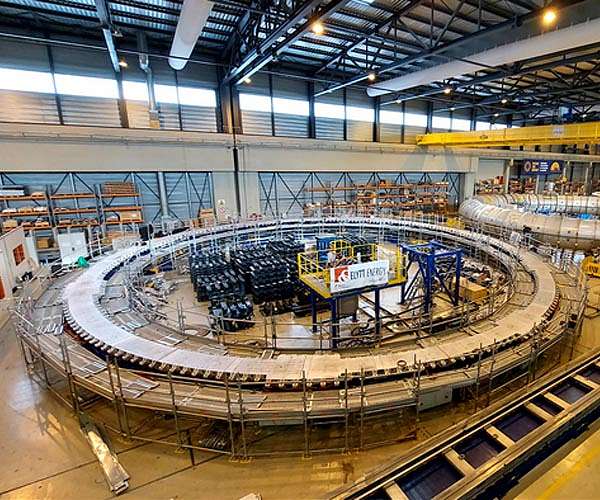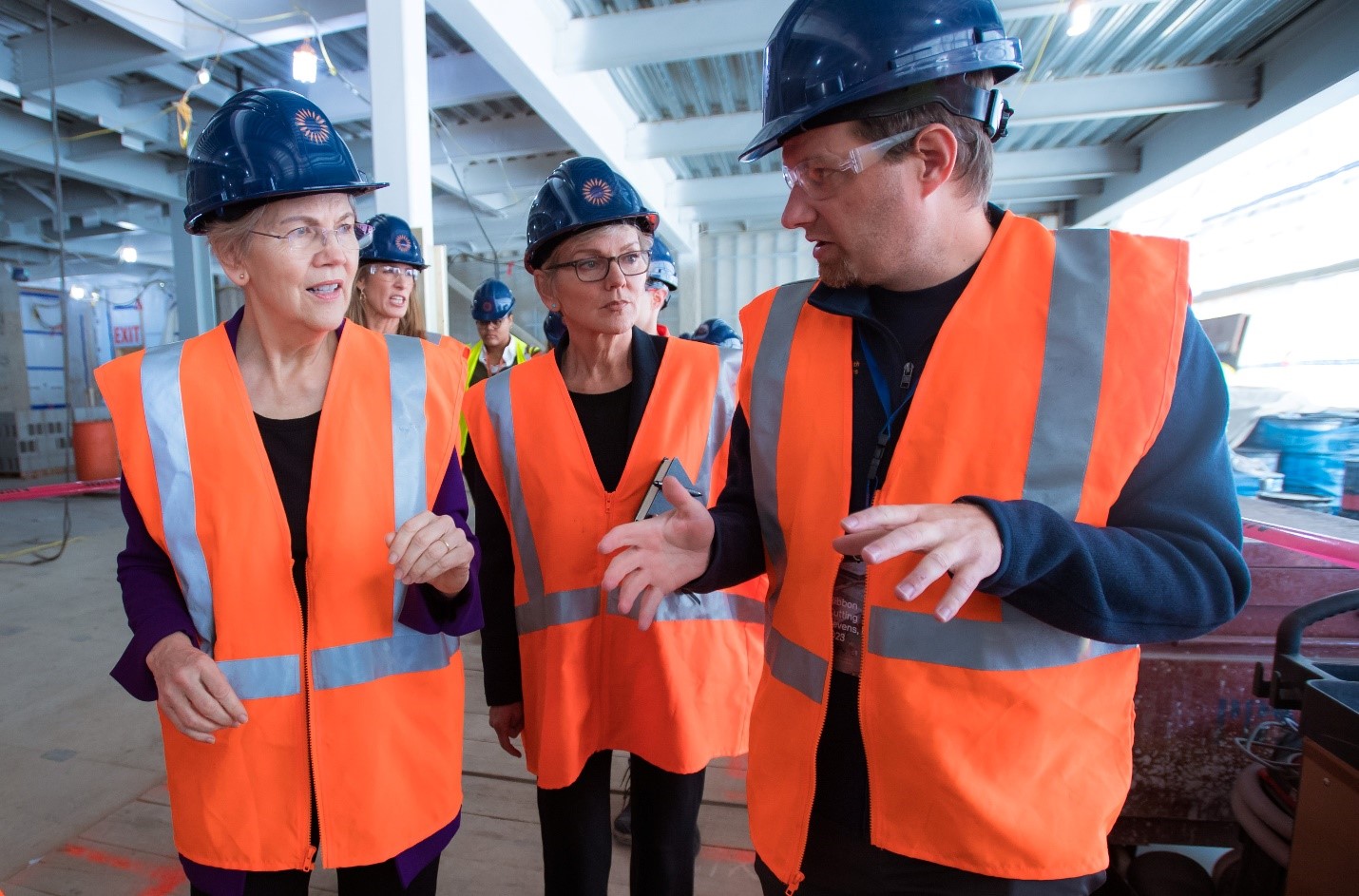
CFS CEO Bob Mumgaard showing Sen. Warren (left) and Secretary Granholm (center) around the SPARC facility. (Photo: CFS)
Commonwealth Fusion Systems (CFS) hosted visiting officials for a tour and ribbon-cutting ceremony to officially open its new headquarters in Devens, Mass., on February 10. Energy secretary Jennifer Granholm, Sen. Elizabeth Warren (D., Mass.), and Sen. Edward Markey (D., Mass.) were among the national, state, and local leaders invited to celebrate what CFS heralded as a “fusion energy campus.”
The nearly 50-acre campus will house an advanced manufacturing facility and SPARC, the fusion machine that CFS expects will produce a net fusion energy gain. The site is about an hour’s drive northwest of the Massachusetts Institute of Technology, where the company was first developed and spun out of MIT’s Plasma Science and Fusion Center (PSFC) in 2018. Collaboration between the PSFC and CFS is continuing under a five-year agreement that was announced in May 2022.
“This site brings together our team, the proven and next stage technologies, the advanced manufacturing capabilities, and the demonstration of actual fusion performance at the scale required to bring fusion energy off the lab bench and to the market,” said CFS chief executive officer Bob Mumgaard, adding that the site “will be the place where fusion science becomes fusion energy.”
The technology: SPARC, and ARC—the commercial-scale electricity-generating power plant that is to follow SPARC—would achieve magnetic confinement fusion inside a tokamak. CFS believes that by using high-temperature superconducting (HTS) magnets, the company can build a machine similar in performance to ITER—the international tokamak project under construction in France—but 10 times smaller. CFS predicts that SPARC will produce over 100 MW of fusion power at fusion gains of Q>10.
In 2021, CFS and MIT successfully demonstrated a steady-state magnetic field of 20 tesla in an HTS magnet. HTS magnets can permit a magnetic fusion device to be substantially smaller, lower cost, and quicker to build, according to CFS. Critically, operating an HTS magnet requires considerably less energy than an equivalent-scale conventional copper magnet. According to Dennis Whyte, a professor in the MIT Department of Nuclear Science and Engineering, director of the PSFC, and a cofounder of CFS, the HTS magnet tested in 2021 required 30 watts, while a nonsuperconducting magnet tested five years prior required about 200 million watts. The difference is a factor of around 10 million.
Devens, Phase 1: Phase 1 development of the new campus, where ground was broken 18 months ago, includes the SPARC facility. According to CFS, the facility is under active construction and will be operational in 2025 and “achieve net energy soon thereafter.” Its successor, ARC, “is expected to start feeding energy into the grid in the early 2030s.”
Phase 1 plans also include an HTS manufacturing facility that will support SPARC and the company’s first planned commercial ARC fusion power plants. CFS plans to later expand the campus to include the development of additional facilities for advanced R&D and future manufacturing capabilities for ARC power plants. CFS reports that it has attracted $2 billion in private investment backing.
What they said: “Massachusetts has such a rich history of being on the forefront,” said Secretary Granholm. “You’re the place where the first telephone call was made, you’re the place where the typewriter was invented, you’re the place where the industry standards for the Internet happened, you’re the place where the chocolate chip cookie was invented. You are on the cutting edge of so much. But this Commonwealth Fusion Systems effort, for the world, could be the most momentous of all.”
“Fusion is entering the transition from exciting science to game-changing energy,” said Mumgaard. “The field is unrecognizable to what it was only years ago and it is exciting to think of what we’ll show over the next few years on the path to commercially viable fusion power plants in time to make a difference.”
